Hiking Strada Napoleonica After Riding Europe’s Last Cable-Driven Tram
Walking to the tram station in downtown Trieste, Italy, the “frog pond” proved to be irresistible to your wandering photographer. Apparently the frogs were placed on a whim on the portion of the Canale Grand (Grand Canal) closed to boat traffic. They proved so popular that they have remained to humor passersby.
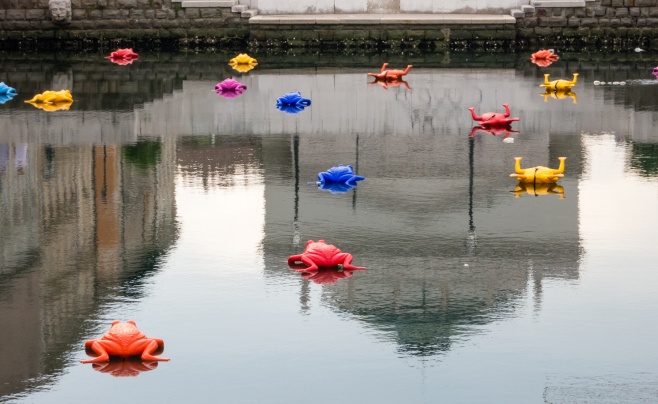
The tram connecting downtown Trieste with the hillside town of Opicina is a hybrid tram railway and funicular. Originally opened in 1902, it is now the last cable-driven tram railway in a European city. Through the flat part of Trieste, the line operates as a conventional, electric powered tramway. As the line begins to ascend, the hybrid system switches to the cable as the power source.
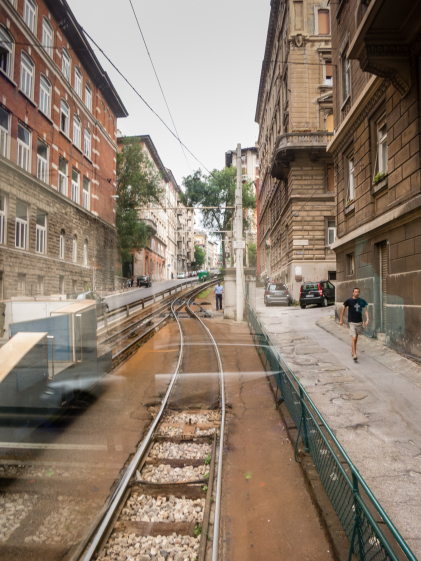
The tram conductor’s view as we head out of downtown.

The tram being pulled uphill by the cable.
Our destination for the morning was just before the town of Opicina at the beginning of the “strada Napoleonica” (Napoleon’s road), where we hiked for several hours, beginning in overcast, then mist (see photograph) and then a steady, warm rain.

Our 3.2 km hike along the strada Napoleonica took us towards Prosecco, first along a pedestrian path and then uphill through the woods where Napoleon traversed the hillside. The area is full of light-grey limestone rocks and cliffs (see photo, below). The vegetation includes the Mahaleb cherry, oaks, evergreens and terebinths. Our path was the highest of three routes along the coast — lowest was the moderate speed highway, then the long distance train tracks, with our hiking path the highest.

Our hike took us past the Tempio Nazionale a Maria Madre Regina, an incredibly modernist church perched on the hillside overlooking Trieste and its harbor in the distance. Constructed just after the end of World War II, the church was built in order to keep faith with a vow taken by the Archbishop of Trieste, Monseingneur Santin, who was asking for salvation of the city. In 1959, Pope John XXIII decided to dedicate the Temple-to-be to Mary-Mother and Queen as imploration for the oneness of Oriental and Occidental peoples.
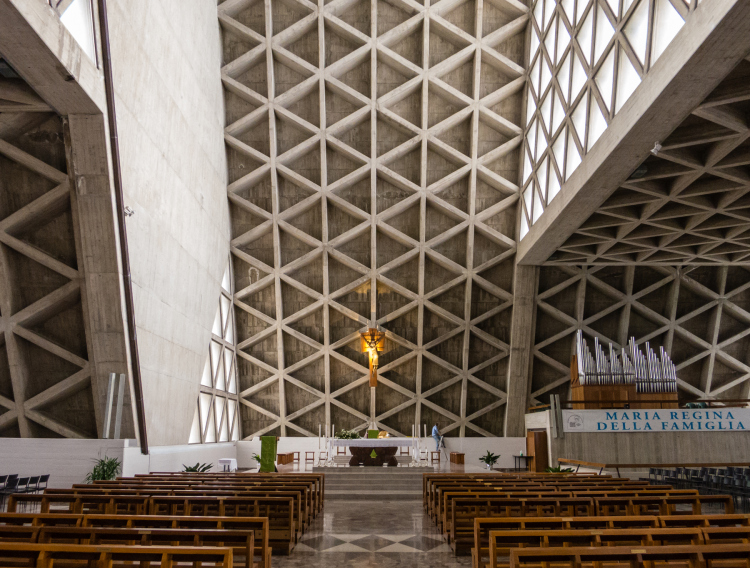
The structure of the church is made entirely of reinforced concrete. The 45-meter (148 feet) high church is a landmark in the hills, visible from long distances.
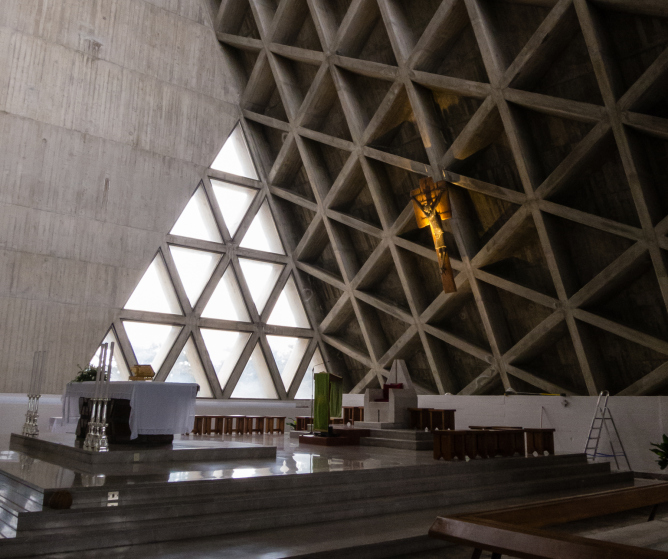
We hiked a little further on to one of the last tram stops where we waited for a downhill tram for a ride back to city-center and a 10-minute walk back to the Ship (now in a solid rainfall). Having shopped previously, we were able to enjoy a lunch of fresh, local produce and fruit along with some outstanding prosciutto from Trieste, and Rialto Market seafood that we cooked: cold gamberetti (shrimp) and sautéed vongole (baby clams) with cherry tomatoes.
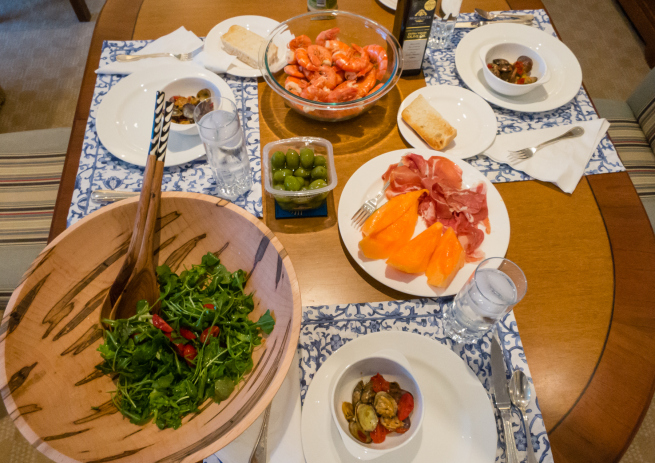
Late in the evening, the setting sun lit up the main town square, Piazza dell’ Unita d’Italia, providing a nice final view of the city before we headed off to dinner and an overnight departure.

Ready to learn more?
Determine whether life aboard The World is the right fit for you. Talk to one of our Residential Advisors today to learn more about this unique lifestyle, details of upcoming Journeys and Expeditions, and ownership opportunities.



